If the comedy and character arcs of GSNK are fueled by comedic misunderstanding and the way they subvert gender roles, the backbone of the series is the genuine friendship depicted among this wacky group of people. For, that’s what these characters are, people. My last article went out of its way to discuss how the characters subvert traditional gender norms, but that doesn’t mean the characters are caricatures or flat. They’re more than just vehicles for comedy or romantic tension; they’re real people who just happen to be super offbeat and hilarious.
As well developed characters, their interactions are poignant and meaningful. Their relationships with each other, more than anything, are the heart and soul of this show. They give it emotional depth to balance out the comedy. Remember, this is a comedy with a dash of romance, so more than romance, the relationships are about friendship, even amongst the “couples.”
Male/Female Friendships
The ‘couples’ are studies in contrast. Each member of a pair being a foil for the other. Kashima’s over-the-top charm and penchant for the extravagant balances out Hori’s subdued, commanding presence. She give him a much needed outlet for silliness that he can’t indulge in himself because of his need to be respected in the face of the height prejudice he faces. Hori soothes and controls Kashima’s antics, channeling her energy into her talent as an actor. They mutually respect each other for their acting abilities, but don’t know how to show it without acts of violence or dirty jokes.
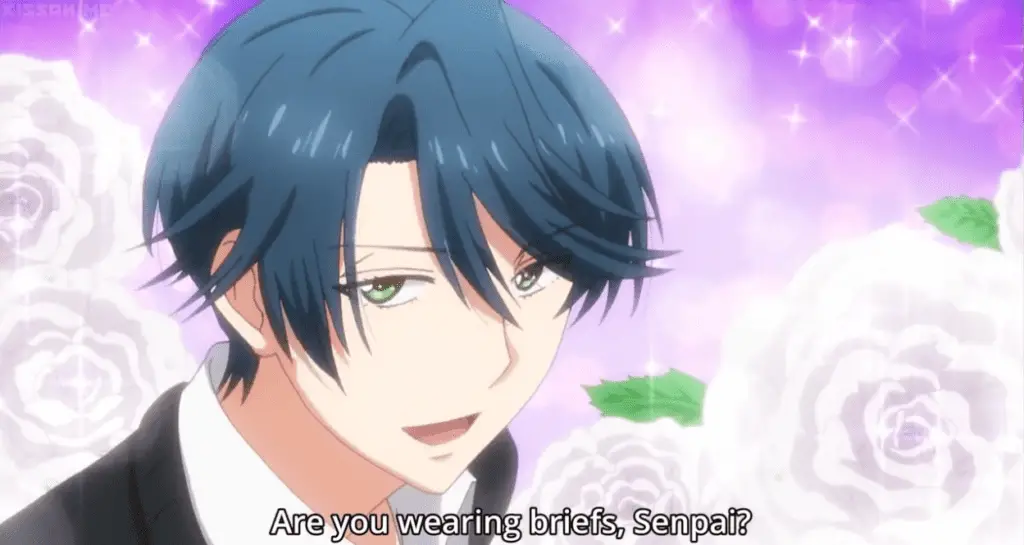
Seo and Wakamatsu may “seem like two dancers with four left feet” but they’re both at least trying to be good people to each other, even if they don’t understand how the other one ticks. Seo’s obtuseness leads her to offend people when she means to be helpful. While it usually hurts more than helps, Wakamatsu grants Seo an outlet for her urge to care for and about others. Seo, for her part inadvertently helps Wakamatsu learn how to be assertive an advocate for himself, even if it fails spectacularly due to his inability to be mean even if he tries.
Nozaki and Sakura talk past each other despite obvious acts of affection on both side, but they’re the nicest of the pairs. We learn in the season finale that Nozaki has, from the beginning of the school year, been looking out for Sakura, even if he didn’t know what his actions meant to her. He helped her get to class, he protects her from the rain. He sees and harnesses her talent with art, for his own ends, but still, he fosters her natural talent all the same. Despite his hard, stoic appearance, he’s a genuinely kind young man who treats her with respect both for her artistic talent and for her as a person.
He never intends to ‘lead her on;’ his gestures of affection are meant to please her even if he doesn’t understand their romantic implications. Sakura, for her part, never forces the romantic issue, preferring to pursue a real friendship with Nozaki. She never mocks him for his desire to write shoujo manga; instead, she supports him. She helps him test plot lines and think up new characters. She might facepalm at some of his and Mikoshiba’s shenanigans, but she never tears him down. Sakura spends the entire series trying to get closer to Nozaki and when it ends, they’ve each enjoyed being around the other person despite their inability to communicate their desires effectively.
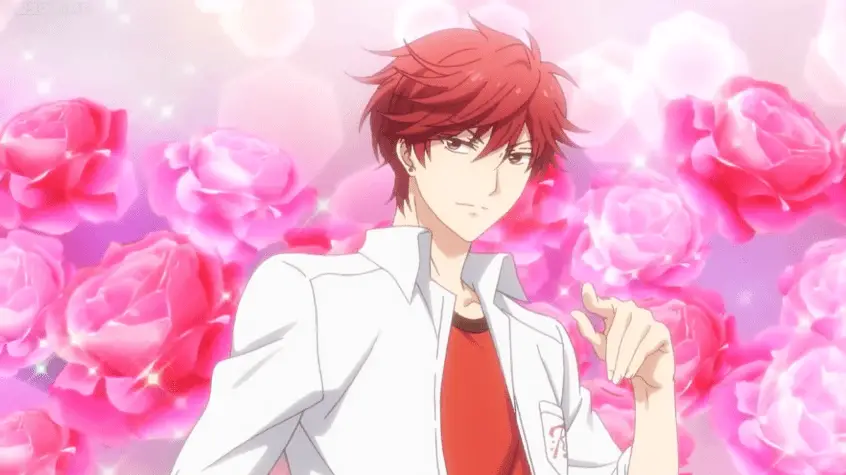
With all these couples, Mikoshiba may seem like the odd man out, but he is in many ways the soul of the show. He doesn’t have a romantic interest, but he’s the basis for the female protagonist of Nozaki’s manga, so in a way, he’s the anchor for this crazy ship (HA). Every other character is involved, whether directly or indirectly, with his story. He’s the heroine, even if he’s not actually the female protagonist. Simultaneously a dork and a flirt, his mouth might cause him social anxiety, but he also manages to be genuinely charming and delightful without trying. He’s what brings and keeps everyone together, whether he knows it or not.
Female/Female Friendships
Shoujo1 anime has a history of depicting healthy, mutual female friendships and GSNK is no exception. Despite opportunities for cattiness and competition existing in the narrative, the girls of GSNK mutually support each other and seem to genuinely like each other. Sakura is initially jealous of Nozaki’s pretty neighbor Miyako, but soon overcomes her antipathy in favor of showing kindness to poor Miyako, who struggles with her overbearing editor Maeno (Nozaki’s former editor, of tanuki fame, see Part 1). Seo is competitive on the basketball court and doesn’t know how to give a compliment, but doesn’t lack for friends despite her flaws. Kashima always has a gaggle of females at her heals, but that doesn’t prevent her from forming lasting female friendships that aren’t about her ability to charm the skirts off all the girls.
The show itself kills two birds with one stone by simultaneously mocking friendship backstories and girl friendships specifically. When Nozaki meets Seo, he imagines that she and Sakura become friends via a series of competitions, claiming, “girls’ friendships are all about butting heads. I totally understand” (Episode 2).
Not only is Nozaki projecting a more stereotypically male process of bonding onto these girls, he’s also undercutting the idea that all girls are catty. Current media struggles to depict female interactions as anything more than a series of catfights and backstabbing, yet Seo and Sakura could not have become friends in a more normal and banal manner: they sat next to each other in class. No drama, no fuss, just seatmates.
There’s no fuss or fanfare at all in how any of the girls become friends. There’s no boy to fight over, no backhanded bitching, no gossiping, no competition of any kind. They have mutual interests or are introduced by other characters, and friendship blossoms from there. These three girls could not be more different, yet they work somehow. When they go out shopping together or talk about rooming together over the summer, it’s believable and, well, normal. They might have different personalities and tastes, but they like each other and the audience can’t help but be drawn in.

Like other great shoujo animes—Sailor Moon comes to mind—these girls have real friendships that are mutually supportive and validating. GSNK doesn’t go out of its way, the friendships are so normal, so natural, if you blink, you might miss just how pleasant it is to have women interacting in such healthy, human ways.
Male/Male Friendships
Everything I just said about female friendships also applies to the males. There’s no fuss or fanfare here either. Despite Nozaki’s projection onto Seo and Sakura, competition isn’t the basis for any of his male friendships either. He started spending time with Mikoshiba to study his character for his manga and they became close friends. Moreover, while they may have a stronger bond than the other males, that doesn’t prevent either of them from making room for new friends. Hori and Wakamatsu join them by help out with the manga, but they bond with each other and Nozaki beyond their shared task. Friendships is not a rare commodity to be hoarded, but a meal to be shared with others.
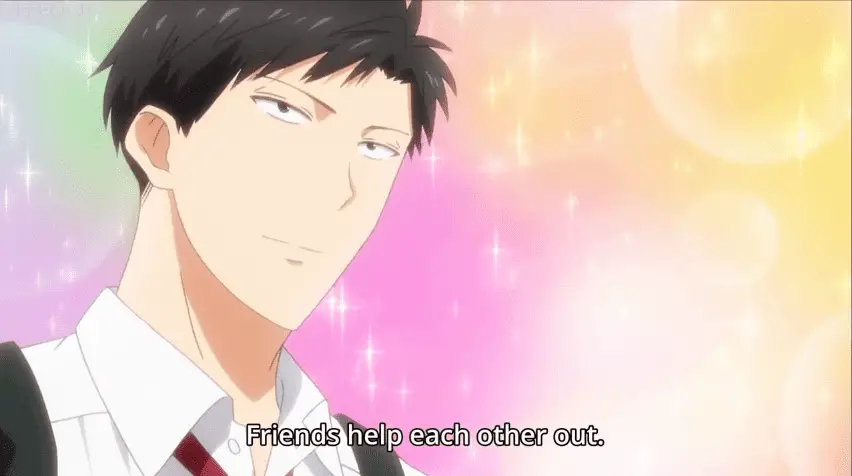
If what makes the depiction of female relationships revolutionary is how normal it is, the corollary for males on GSNK is how affectionate and kind these boys are to each other. Nozaki is the consummate host, even to his male friends. He cooks for them and tries to make them comfortable while they’re helping him work. When the guys get stuck at his house due to rain, Nozaki hosts a sleepover. He uses it as a reference for his manga of course and turns all their conversations into “girl talk.” However, even when they agree to help him out by talking about girls, it doesn’t devolve into sex talk, macho posturing, or teasing. They genuinely want to know what’s going on with each other. Even Mikoshiba gets up the nerve to ask Nozaki about Sakura, but by this point, Nozaki’s fallen asleep.
They share their feelings and concerns with each other frequently throughout the series. When given the opportunity to potentially mock Mikoshiba for being otaku (“having an obsessive interest, typically in anime or manga”) about bishoujo figures and dating sims or nervous about the mixer he was invited to, Nozaki instead finds ways to engage his friend and talk to him on his level. When Wakamatsu is anxious because of Seo’s teasing behavior, he opens up to Nozaki. Instead of making fun of him, Nozaki helps him not only sleep but find a way to confront Seo about her behavior. When Hori is frustrated with Kashima, his friends find ways to support him and try to problem solve. Like the girls, these boys are widely different in personality, behavior, and interests, but they work as friends because they are genuinely interested in each other’s welfare.
Romance
If there was one word to describe how this show handles romance, its “shipbaiting.” What does that mean? Shipbaiting is when a show teases a romantic interest, purposefully putting in scenes that seem to hint that some kind of romance is developing, but never resolves the tension. It’s two characters looking deep into each others eyes and one saying, “I love….bagels. That’s right, they’re the best bread food ever.” You might have your OTP (mine is Kashima/Hori), but, spoiler alert, they don’t get together at the end of the series. No one gets together.
GSNK has it in spades. Nozaki famously misunderstands Sakura’s professions of love as a desire for an autograph in the very first episode. Despite her fairly obvious adoration of him—her description of a perfect man is Nozaki and she asks Mikoshiba to pose as “Nozaki drawing his manga” for the art club—Nozaki is completely oblivious. Any and all of her protestations of interest are misunderstood. Nozaki frequently displays public acts of affection for Sakura that end up only being him trying out scenes for his manga. In the most shipbait-y moment of the entire series (the final episode), Sakura accidentally blurts, “…love you” and looks embarrassed. After the final credits, as Nozaki and Sakura look they look like they’re about to kiss, Nozaki leans over to whisper in Sakura’s ear and says, “I feel the same. I love fireworks.”
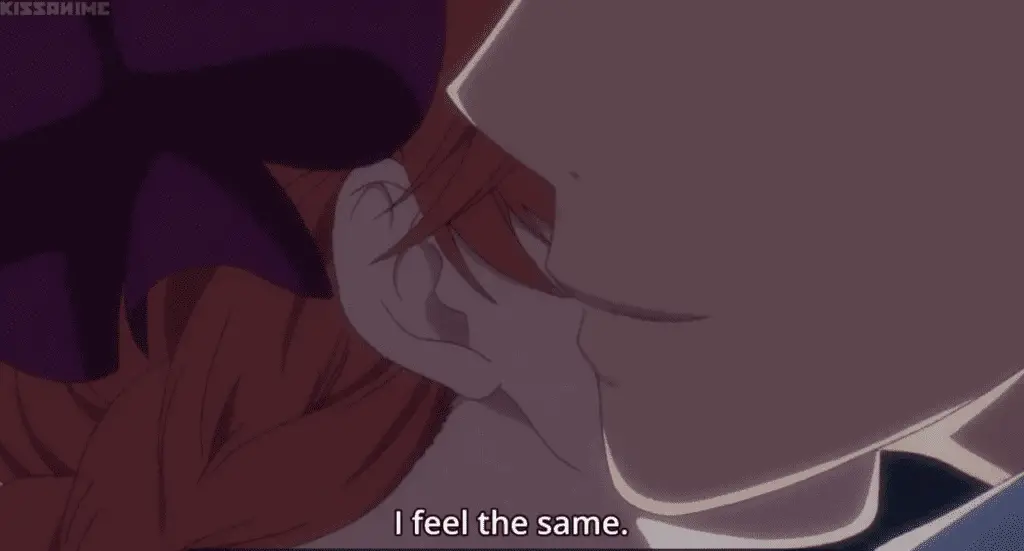
Neither of the other couples fare any better in the romance department. Kashima continues to try and impress Hori with grand gestures that turn out to be either mere jokes or quasi-bullying. Their mutual admiration for each other’s acting skill fails to resolve into anything more than their typical hijinks. Seo and Waka actually go on a date to the movies, not that it progresses their relationship at all. Waka flips out at the idea that Seo might be dating someone else but once he finds out that it was Kashima (and Kashima is a girl), they return to their usual dynamic. Meanwhile poor Mikoshiba continues to flirt and feel embarrassed, and, presumably, play his dating sims.
This lack of resolution is not unusual for rom-coms, whether anime or not. Sexual tension is one of the most common methods writers use to maintain audience interest when the foundation of a show is the romance. However, where GSNK is successful is that shipbaiting is a relatively minor aspect of the overall plot of the show. Being a comedy with a dash of romance allows the show to sideline romantic tension in favor of comedy and friendship. For example, it doesn’t thrust the romantic tension between Nozaki and Sakura to the foreground, despite that being the opening scene of the show. Plus, it spaces out the romantic tensions, dispersing the various couples’ arcs out across the entire season so that you never focus on one couple’s tension for longer than one episode at a time. For example, in episodes 8-12, the focus is as follows: Kashima/Hori, Nozaki/Sakura, Seo/Waka, Nozaki/Sakura + male friendships, everyone. You simply don’t have time to fixate on the shipbaiting because there is too much else to enjoy and plenty of space between romantic arcs.
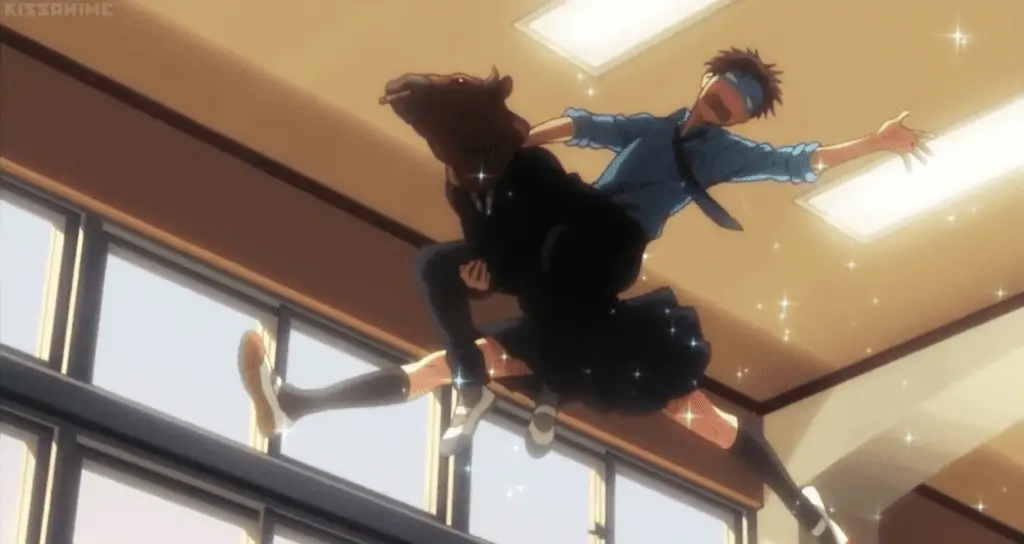
Conclusion
GSNK is a show about friendship more than anything. The comedy arises quite naturally out of the juxtaposition of such diverse characters, and rather than being props for romantic tension, the characters are above all, friends. While such normalized friendships can be standard fare for anime viewers, they are not common in most TV shows nowadays. Many shows thrive on tension and competition. Take Friends for example, a comedy ostensibly about friendships. Although there is a real friendship dynamic there, the females are still catty and secretly jealous of each other at various points. The guys compete with each other, either for the girls or to prove how ‘manly’ they are. They show affection or emotional support, but its typically tinged with blatant “no homo” vibes. Romantic tensions can last several episodes in a row and span entire seasons without resolution. They basically shipbaited Ross & Rachel for all 10 seasons.
Compare this to what I’ve said is true of GSNK. While the ending is blatantly shipbait-y, it does it so well, I’m not mad at them for not resolving literally any of the romantic tension. Fine, maybe mildly annoyed.
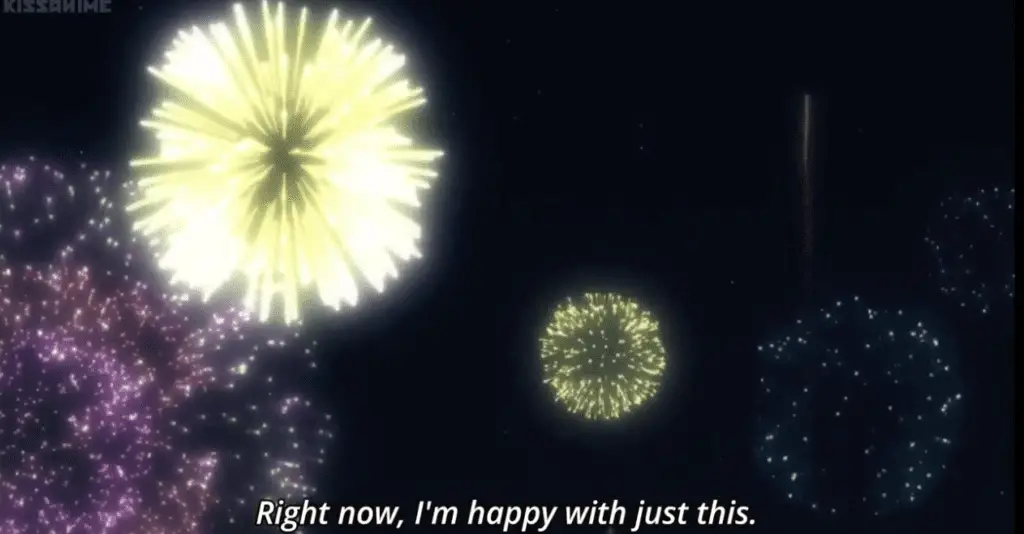
I love just how normal friendship is on this show. Like in real life, friendship just happens. Whether it’s a shared task like working on a manga or happenstance, like sitting next to each other in class, friendships happen in normal everyday situations. It’s not over-the-top drama or extreme circumstances. Friendships on GSNK are positive, supportive, generous, and mutually beneficial.
I adore every single one of these characters so much, I’d be happy with them all just being friends forever. That’s how well done the balance between shipbaiting and friendship is. I can easily project resolutions onto the story, but I could also be (mostly) satisfied with none of the pairings never actually being canon. The only thing I desperately want more of, is episodes (Give us season 2!). Other than that? I’m willing to accept the shipbaiting because I love these characters and their interactions with each other so much and the shipbaiting itself is more understated than most and not the main arc of the show. It’s a difficult balance and, for the most part, GSNK has done it well. You manage to be emotionally invested in these people, their friendships, and their romantic interests, but not so much that you’re emotionally devastated at the lack of resolution.
Only one more installment left! Part 4 will discuss GSNK as a critique of manga production and art as a (mis?)representation of reality.
Images courtesy of Doga Kobo
1. [There is some degree of ambiguity about how to classify GSNK. When the manga first came out, it was originally listed as a shounen manga, that is, a manga aimed at boys aged 8-18. Since then, Gangan Online, the original publisher, has reclassified the manga as shoujo, which is manga aimed at girls aged 8-18 (Warning, the website is in Japanese).]


